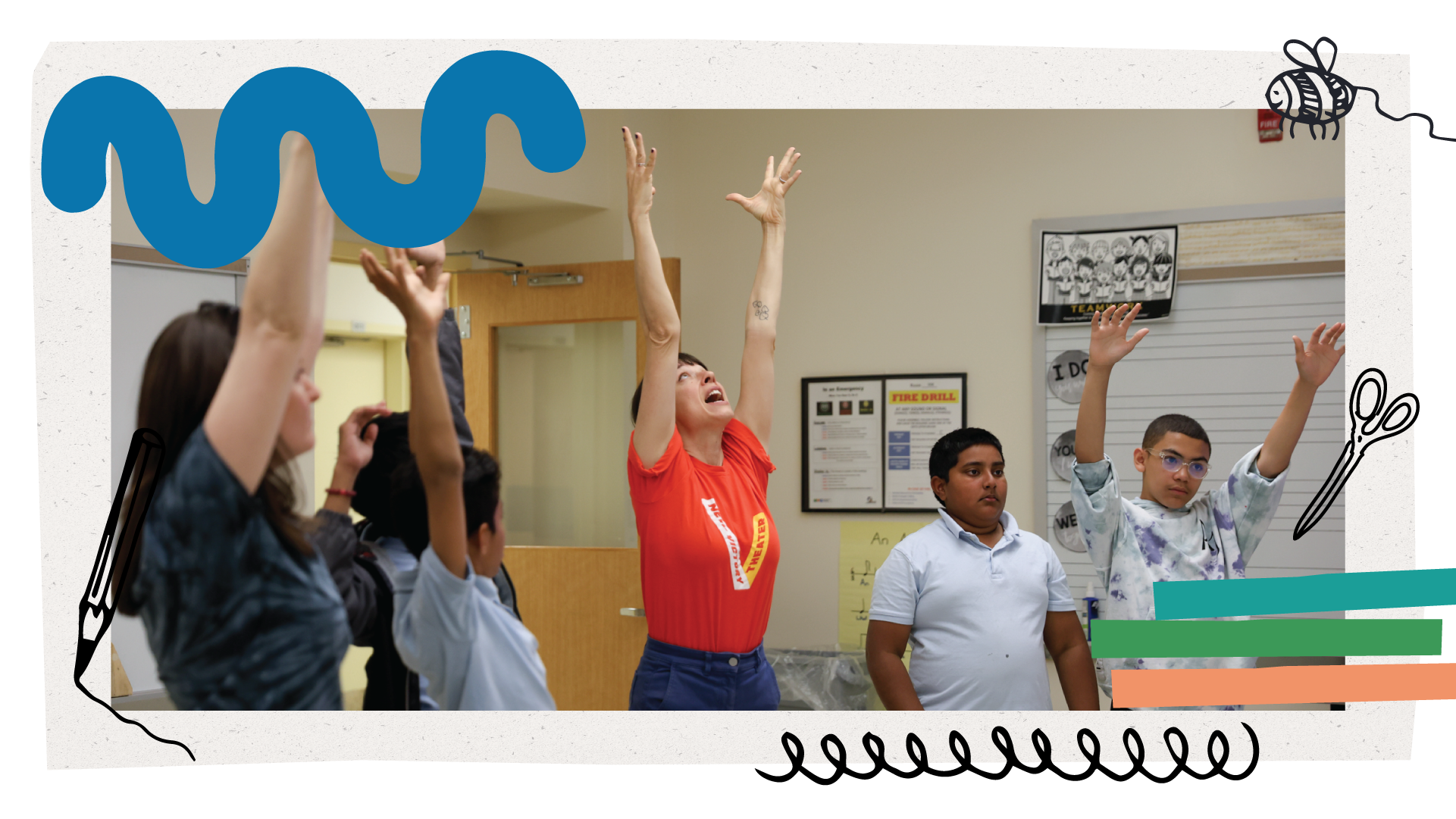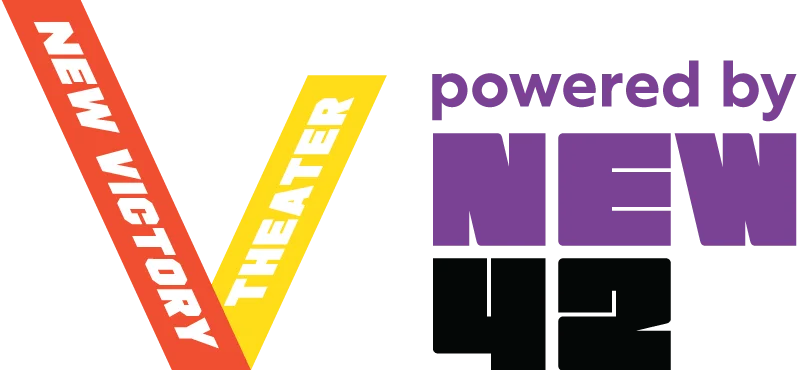Back to Resource Library Download PDF
Download PDF
I’d Like to Dancer the Question
 Download PDF
Download PDFEducators can use the activity below to explore how different qualities of movement can transform physical expression.
Materials Needed: one speaker or sound system for playing music, a large space for dancing
- Gather everyone in an open space. Introduce the concept of Laban’s Eight Efforts (see the second page of the attached handout) as a tool that helps artists describe how movement feels—not just what it looks like. Go over the effort elements listed below. Then, demonstrate each with your body in exaggerated or playful ways. These efforts have two parts:
- Part One—The Four Components: Made up of four components, each of which has two elements: Direction (Direct or Indirect), Weight (Heavy or Light),
Speed (Quick or Sustained), Flow (Bound or Free) - Part Two—The Eight Efforts: Punch, Slash, Dab, Flick, Press, Wring, Glide and Float. As indicated on the second page of the attached handout, Laban identified which component parts were to be used for each effort. To use Wring as an example: the Direction is Indirect; the Weight is Heavy; the Speed is Sustained; the Flow is Bound.
- Part One—The Four Components: Made up of four components, each of which has two elements: Direction (Direct or Indirect), Weight (Heavy or Light),
- Offer the group an open-ended question to explore through movement. These prompts invite kids to embody ideas, emotions and metaphors using the Four Components (Direction, Weight, Speed and Flow). Choose one question per round or let students generate their own. Encourage students to make expressive, intentional choices using the Eight Efforts.
- What does bravery feel like in your body?
- How does joy move when it’s trying to stay quiet?
- If you were an animal, how would you move through a crowded room?
- What does it look like when curiosity leads the way?
- How would you enter this space if you were carrying a secret?
- How does celebration move in a body that’s also tired?
- If your body were telling the story of yesterday, what would the beginning, middle and end look like?
- Give students 30 to 60 seconds to improvise individually in response to the prompt, exploring a range of qualities. Ask them: What happens when
you change just one element? What happens when you change two? What happens when you layer them together? For example: change the Flow from Free to Bound, or change the Direction from Direct to Indirect. - As a class, invite students to build a short phrase together using the prompts above or by creating new ones. Ask questions like: What movements did you see that were especially expressive? Can we arrange a few gestures or movements into a short sequence? What effort qualities do we want to use to perform this phrase, and how do they change the meaning?
Reflection Questions:
- How did your movement change when you focused on Laban effort qualities?
- What surprised you about working as a group in this way?
- Can you think of a time outside of this activity where movement quality can communicate meaning?
